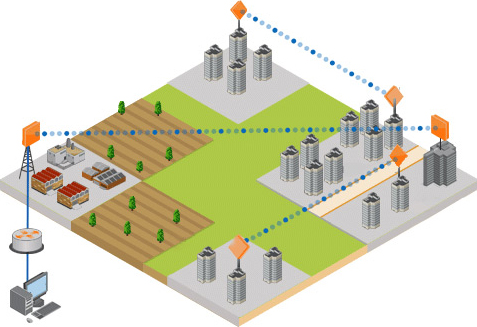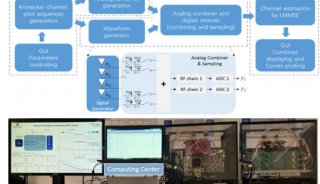毫米波通信技术应用介绍(一)
An Introduction to Millimetre Wave Technology
With users ranging from enterprise level data centres to single consumers with smart phones requiring higher bandwidth, the demand for newer technologies to deliver these higher data transmission rates is bigger than ever before.
A wide range of technologies exist for the delivery of high throughput, with fibre optic cable considered to be the highest standard. However, fibre optics is not unmatched, especially when all considering economic factors. Millimetre wave wireless technology offers the potential to deliver bandwidth comparable to that of fibre optics but without the logistical and financial drawbacks of the deployments.
Millimetre wave represent the RF Signal spectrum between the frequencies of 30GHz and 300GHz with a wavelength between 1 - 10 millimetres but in terms of wireless networking and communications equipment, the name Millimetre Wave generally corresponds to a few select bands of radio frequencies found around 38, 60 and, more recently, the high potential 70 and 80 GHz bands that have been assigned for the public domain for the purpose of wireless networking and communications.
The image below shows the spectrum from 0 - 100GHz with the most popular Wireless Networking Frequency bands located to represent how much bandwidth is available in the Millimetre Wave regions.

In the UK, there have been 3 frequency bands that have been allocated for commercial Millimetre Wave usage, these are as follows:
57 - 66GHz: The 60GHz Millimetre Wave Band or V-Band is governed by OFCOM for licensed operation. The large amount of signal absorption via atmospheric oxygen and tight regulations make this frequency band more suited to short range, Point-to-Point and Point-to-Multipoint Millimetre Wave solutions. Between 57 - 64GHz the band is licensed and regulated but from 64 - 66GHz the band is unlicensed and self coordinated.
71 - 76GHz and 81 - 86GHz: The 70GHz and 80GHz Millimetre Wave Bands or E-Bands are governed by OFCOM for licensed operation only and are regarded to be the most suited band for Point-to-Point and Point-to-Multipoint, Millimetre Wave Wireless Networking and communication transmission. Each band has a 5GHz spectral range available which totals to be more than all other assigned frequency bands added together. Each 5GHz range can act as a single contiguous wireless transmission channel allowing very efficient use of the whole band and in turn these result in high throughput speeds from 1 to 3 Gbps whilst only using simple modulation techniques such as OOK (On-Off-Keying) or BPSK (Binary Phase Shift Keying). These throughput speeds are substantially higher than those found in lower frequencies using much more complex and advanced orders of modulation so even higher throughput speeds should be achieved with Millimetre Wave devices when utilising the same advanced techniques. It should be only a matter time before market demand brings these to the forefront.
In the US, another band is available alongside the 3 listed above which is::
92 - 95GHz: The 94GHz Millimetre Wave Band or W-Band is governed by the FCC Part 15 for unlicensed operation also but only for indoor usage. It may also be used to outdoor Point-to-Point applications following the FCC Part 101 regulations but due to a range between 94 - 94.1GHz being excluded, the band is less spectrally efficient than the others.
Applications
Wireless Metro Ethernet Networks

Whilst the number of economic and commerce buildings continues to grow in and around city areas, the requirement for high bandwidth internet is as high as it has ever been. However, many of these buildings rely on old infrastructure transmitting data over out-of-date copper wire due to them not being connected to the main fibre optics grid, strangling the efficiency of business operations.
Despite the majority of these buildings being located within a couple of miles from the fibre optic grid or ring there have previously been no practical and cost effective solutions to install a connection; this is where Millimetre Wave technology can help. By installing a Point-to-Point Millimetre Wave link from a building connected to the fibre optic ring to the target building a high bandwidth, very reliable connection can be made comparable to the actual metro network ring itself.
-
项目成果

-
技术原理










